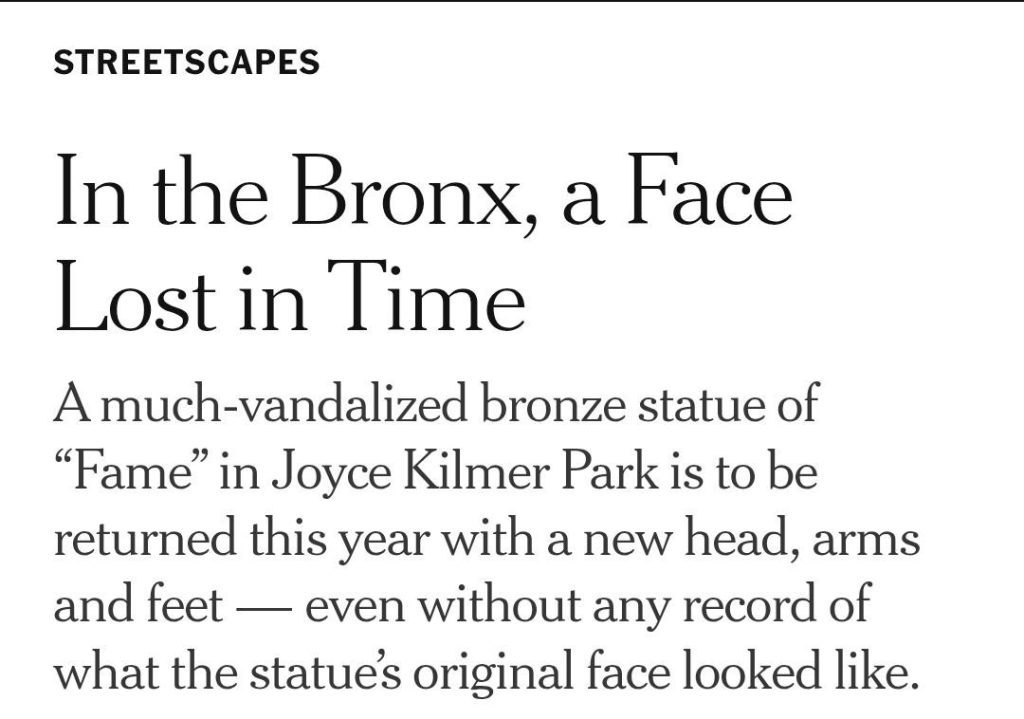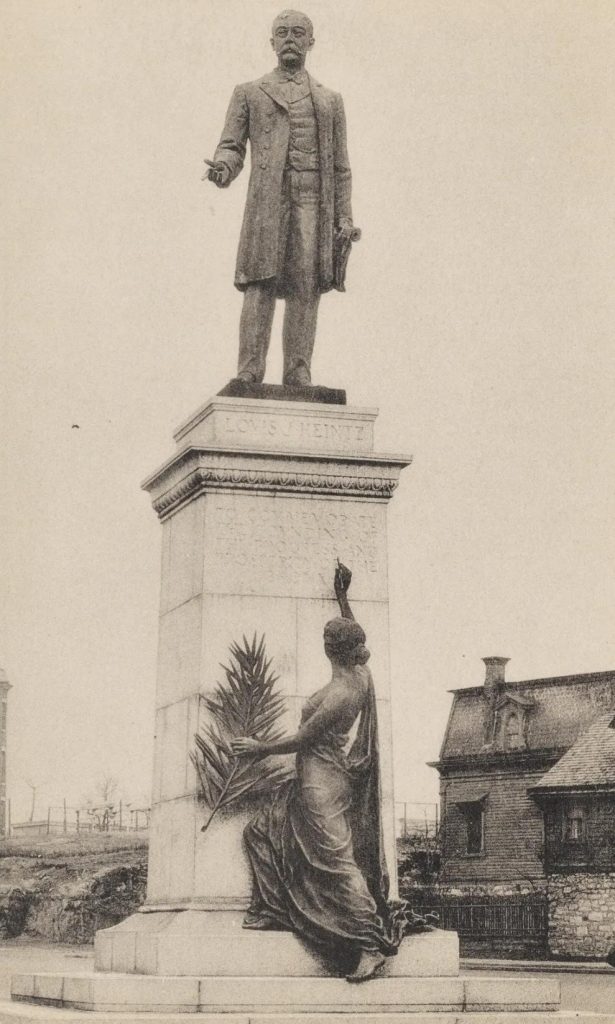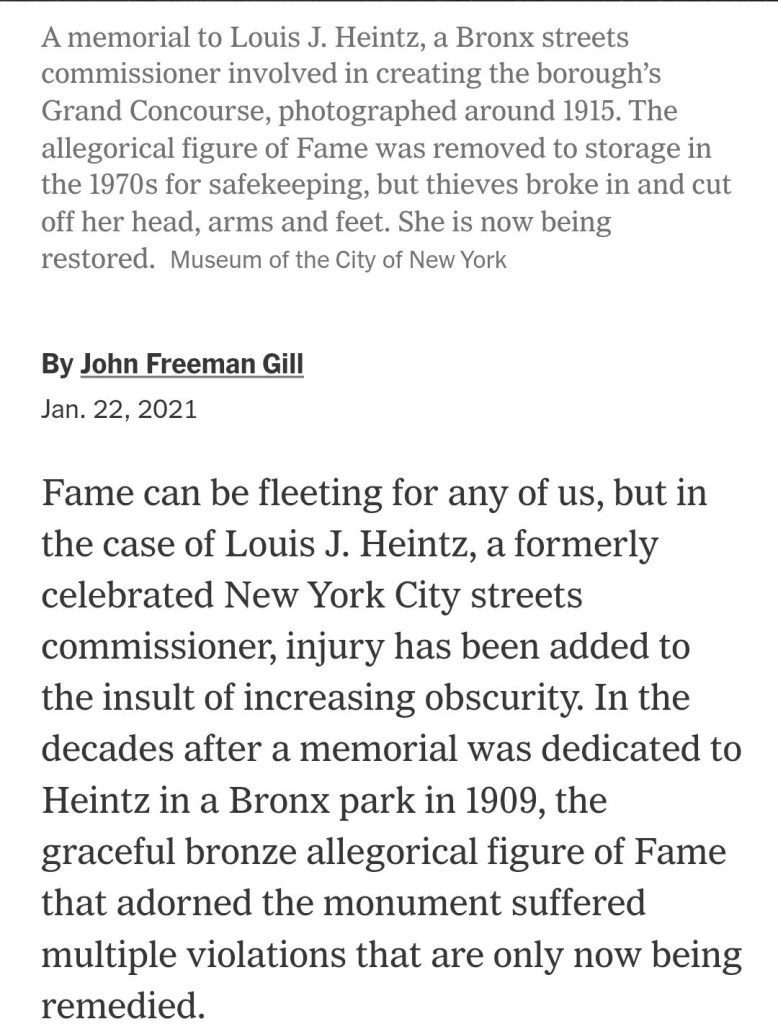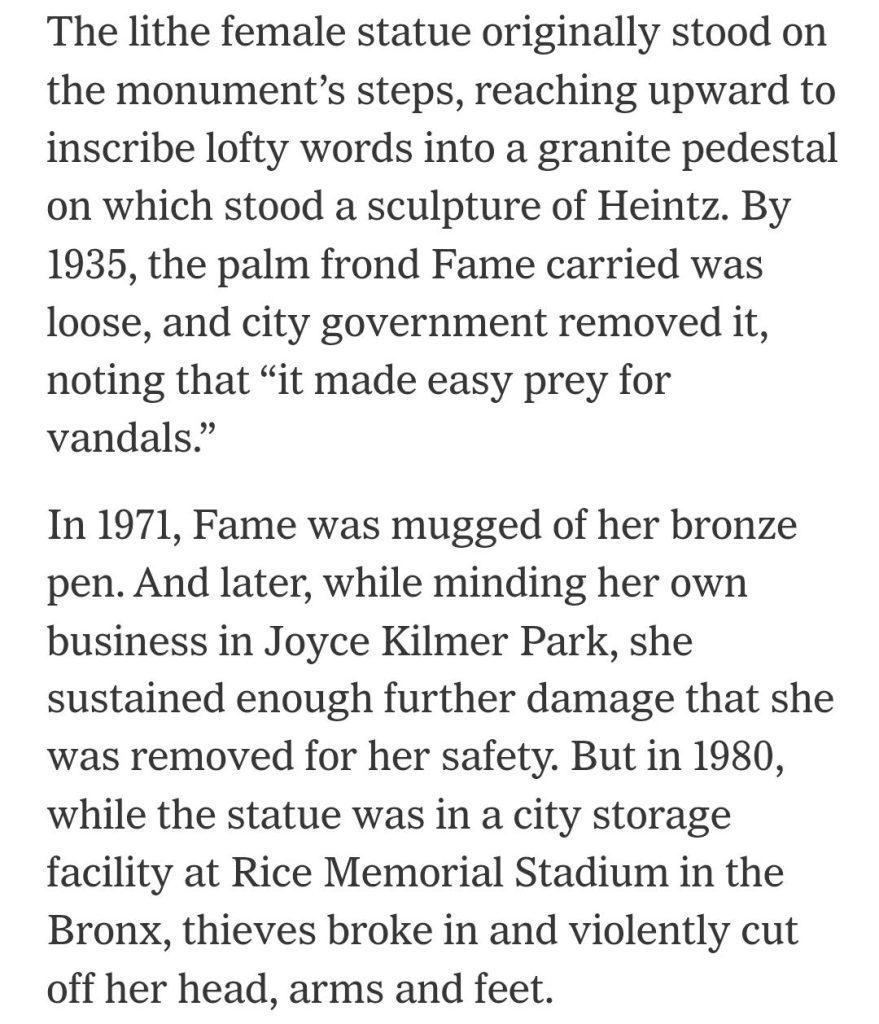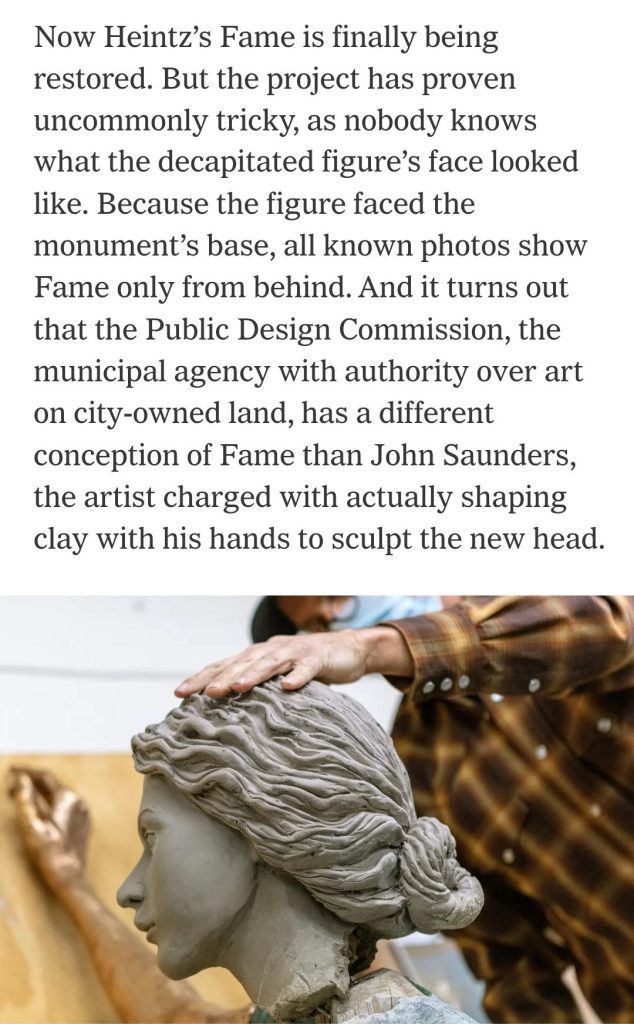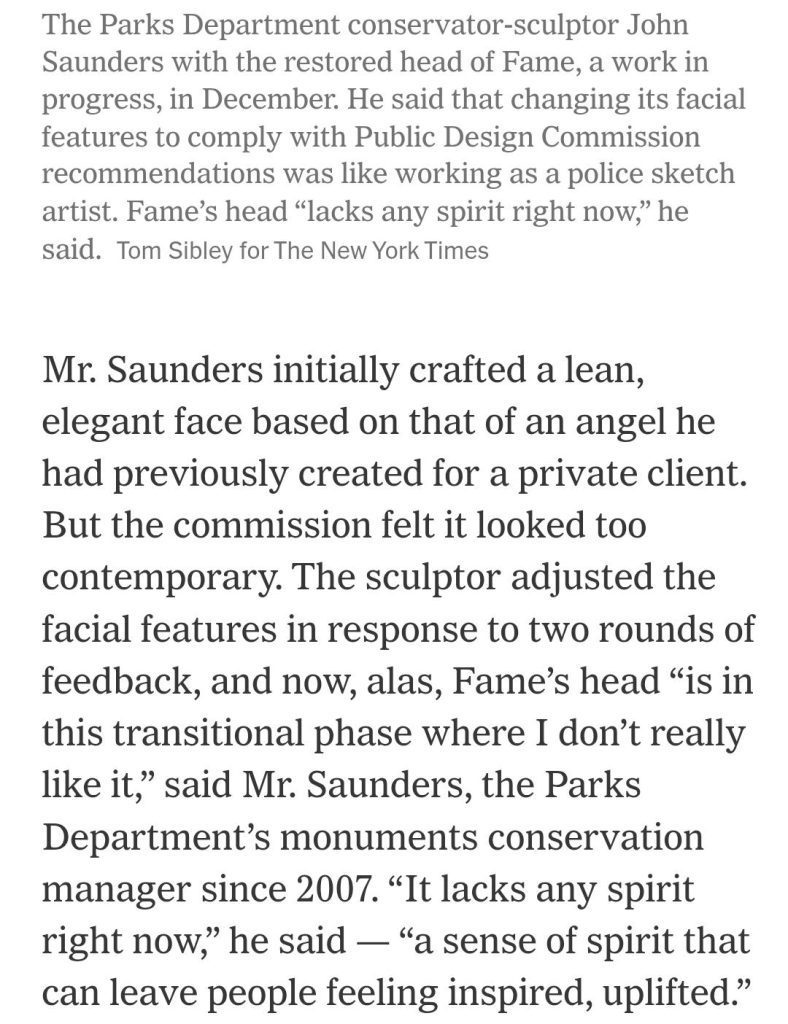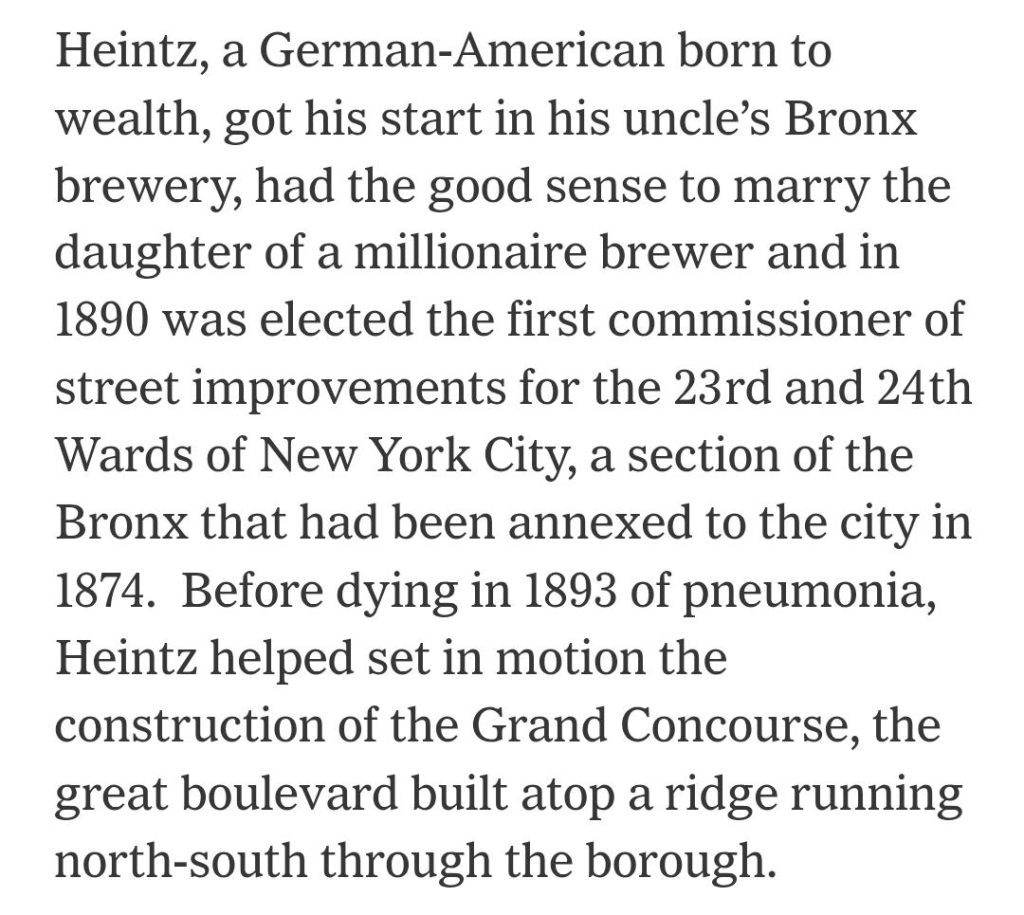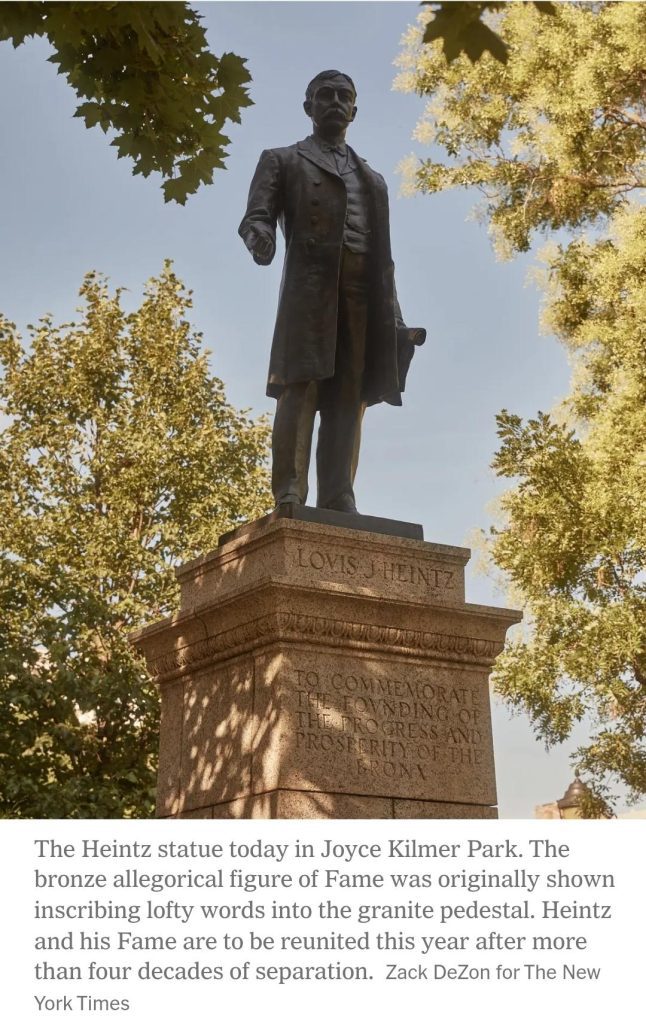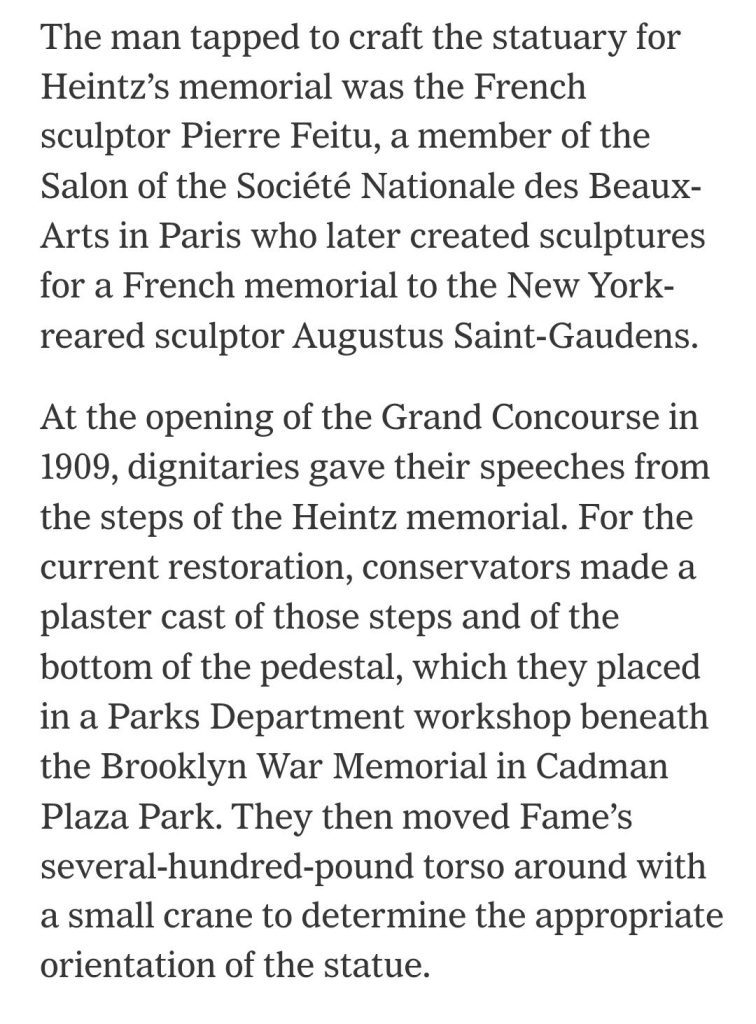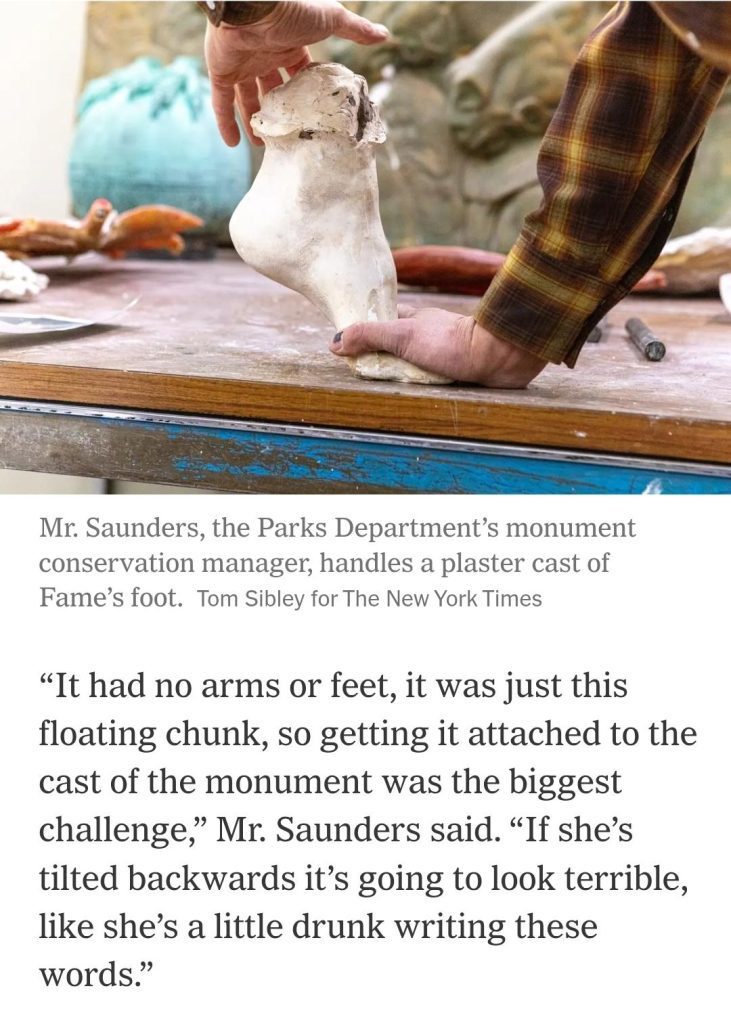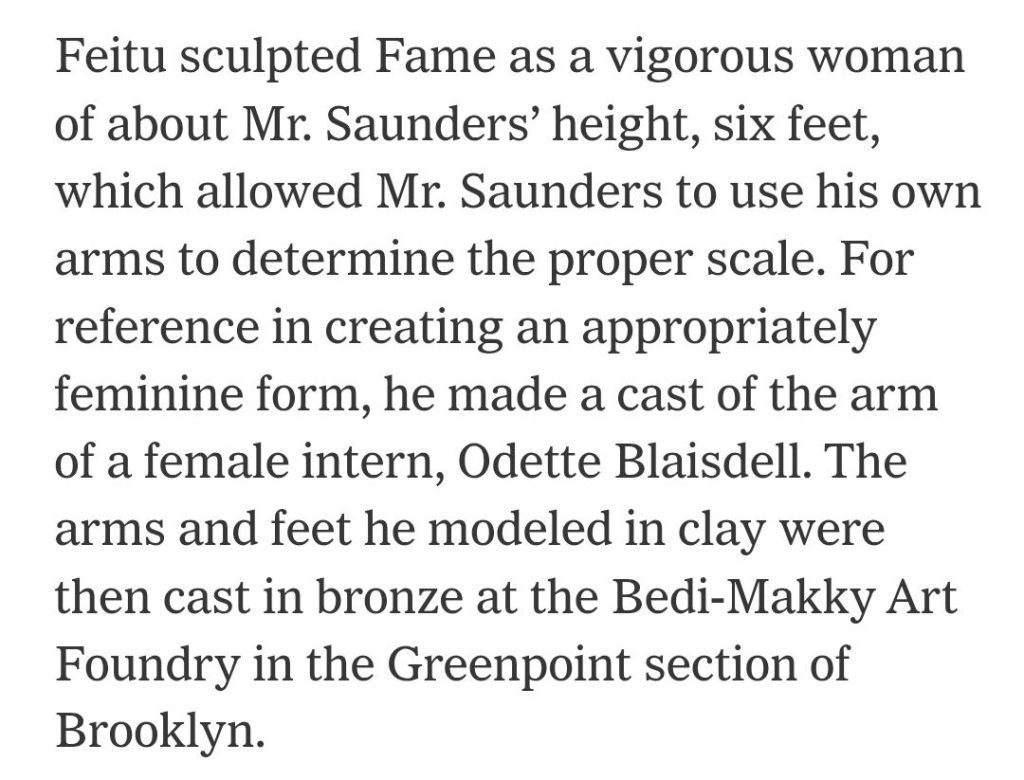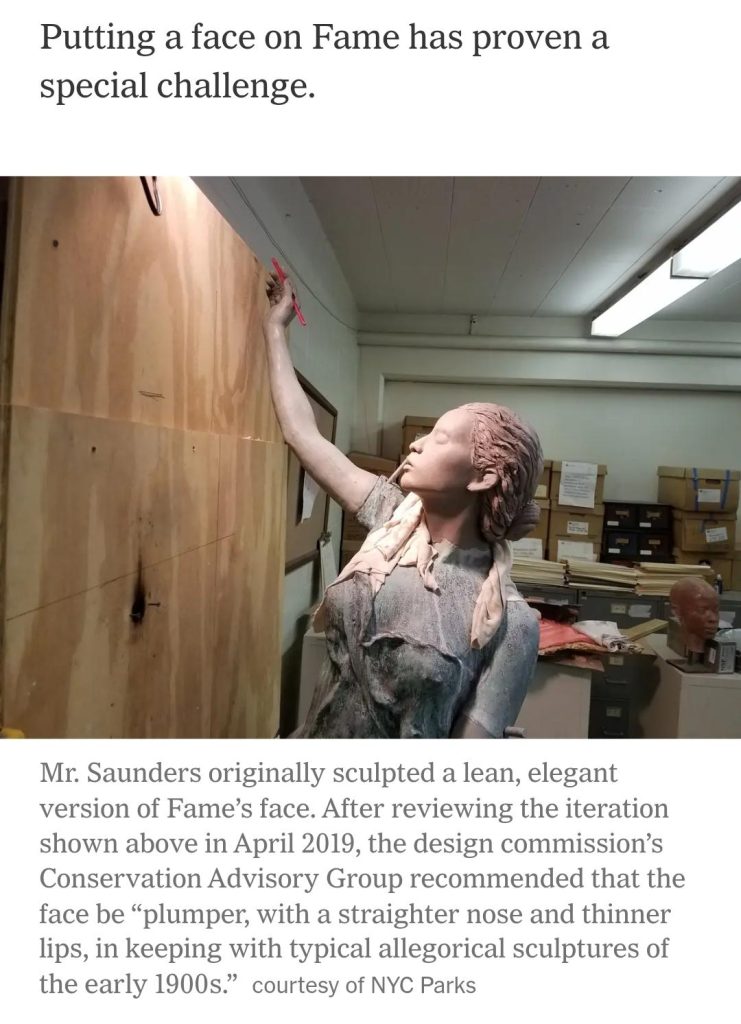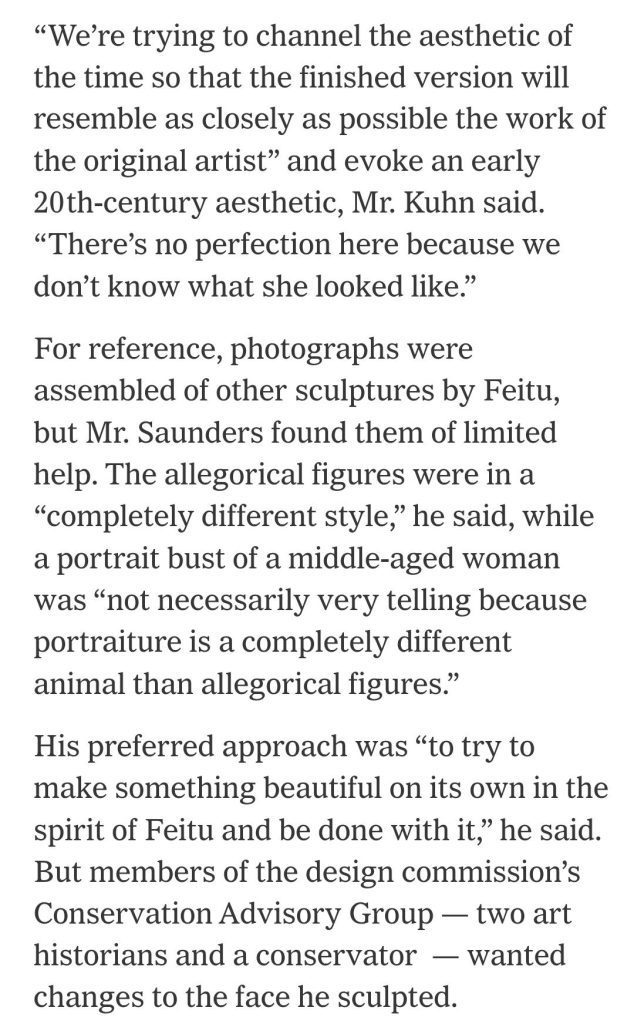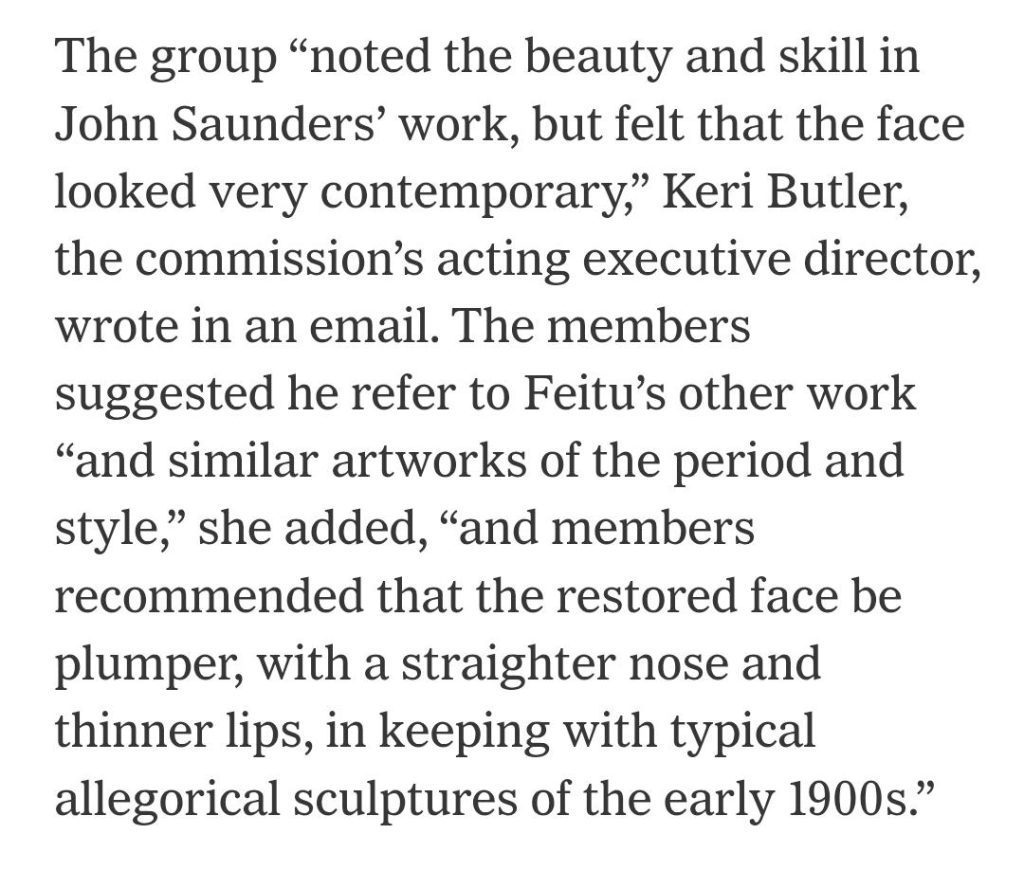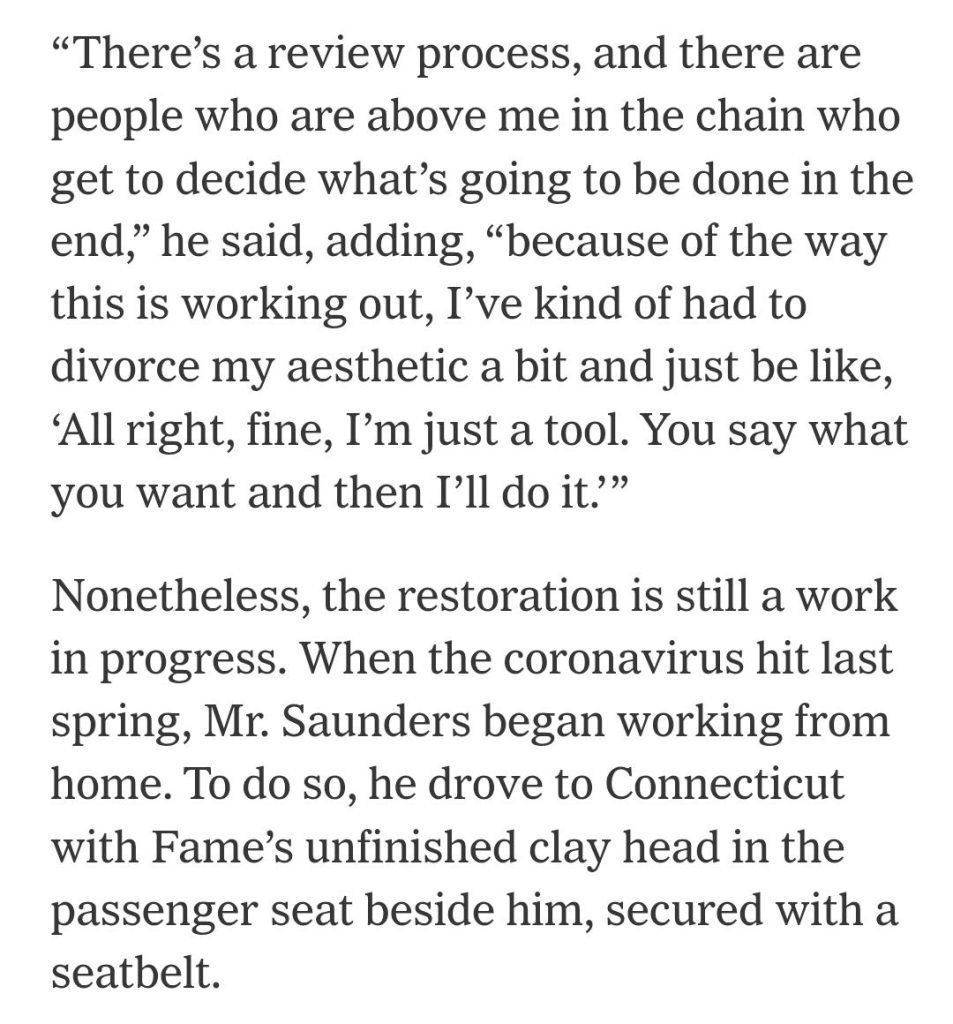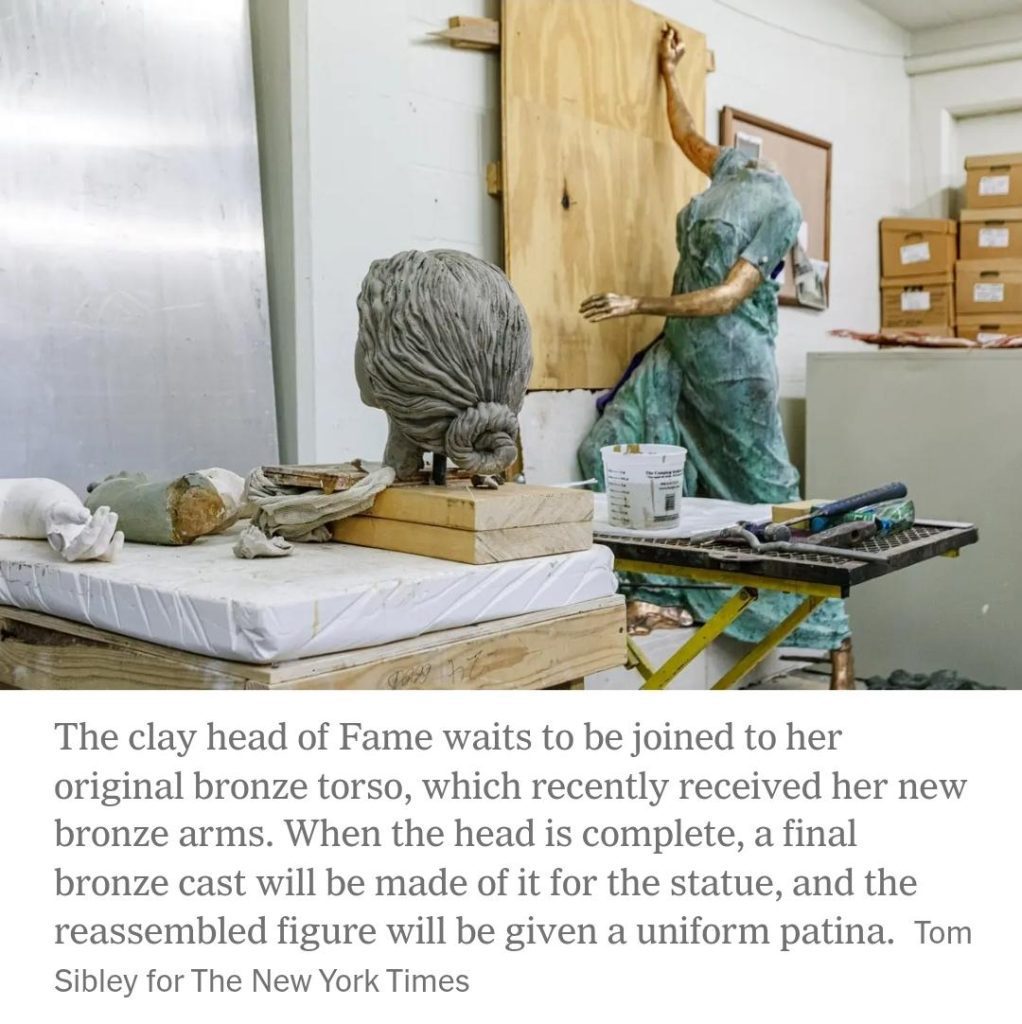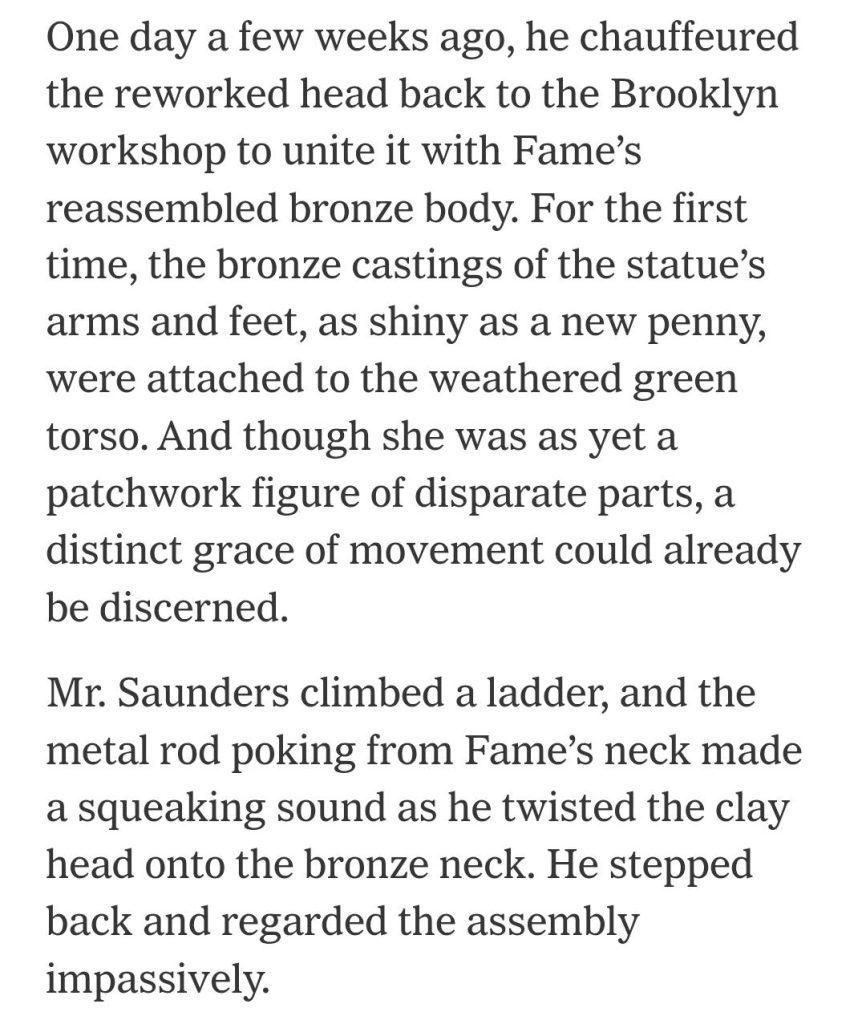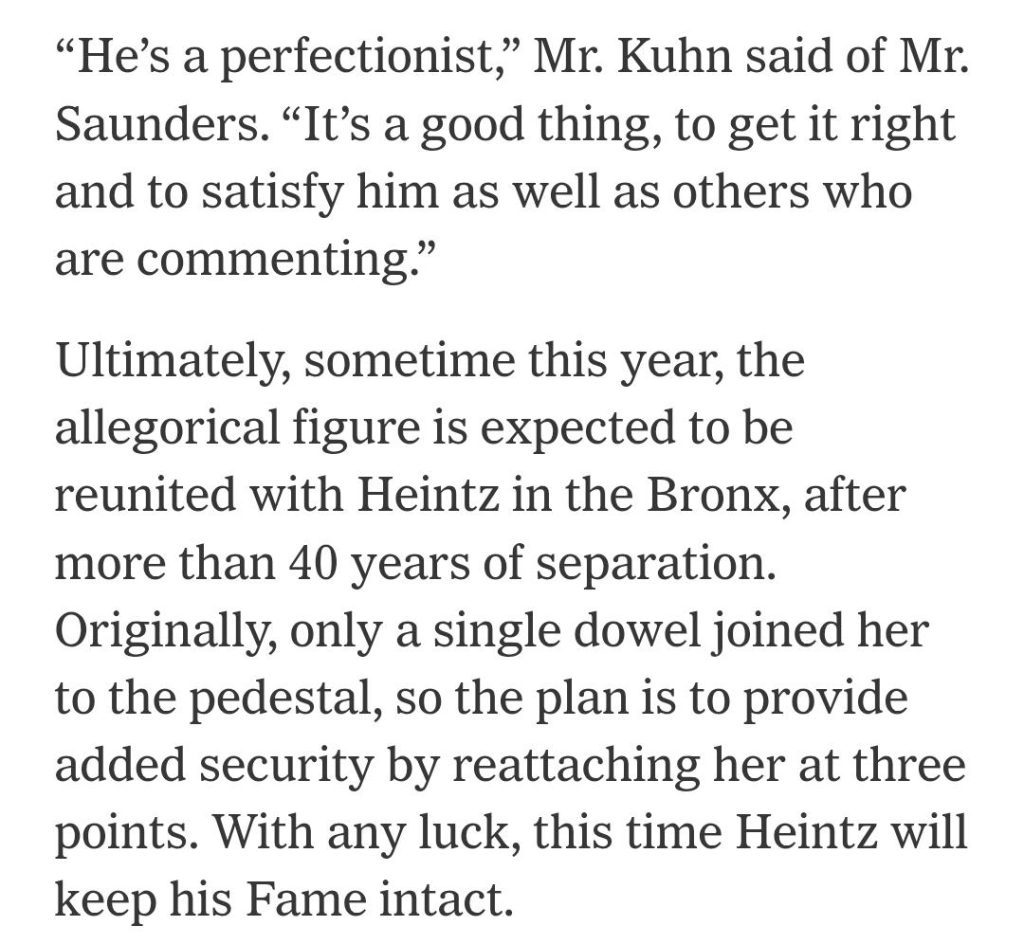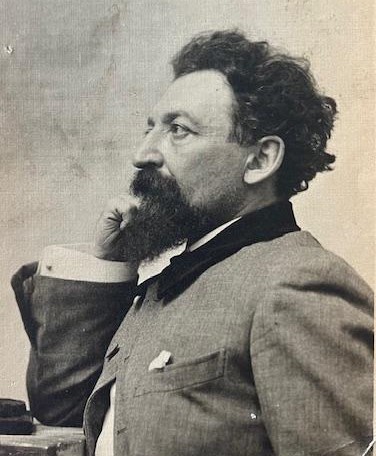
Born on April 16, 1868, in Mûr-de-Bretagne (known as Mur in Breton), Pierre Feitu hailed from a distinguished family in Pontivy, where several magistrates, medical doctors, and naval surgeons could be found among the Feitus.

PHOTO OF BYGONE DAYS
House in which Pierre Feitu was born in rue de la fontaine, aka rue de l’église nowadays
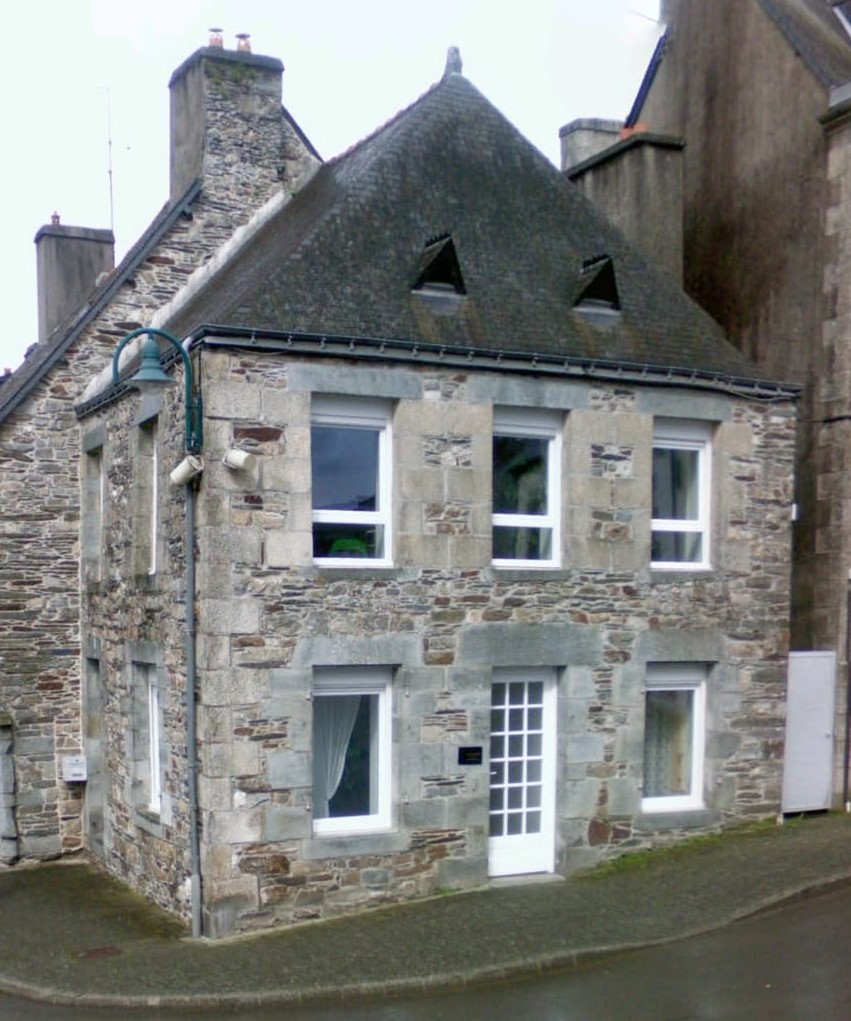
RECENT PHOTO

Miniature calamine planter

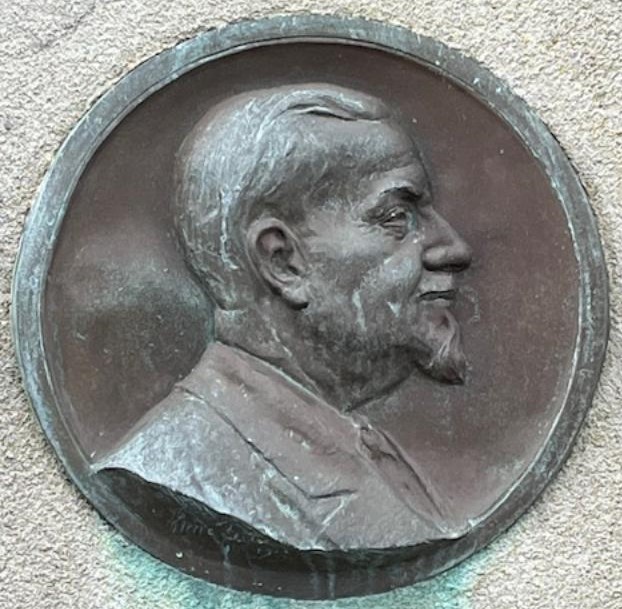

Medallions
Saint-Hubert bridge (La Ville-ès-Nonais), Plouer-sur-Rance (Brittany)
Medallions portraying the “backers elect”, formerly placed on the columns of the bridge, now embedded on the façade of the former toll house.

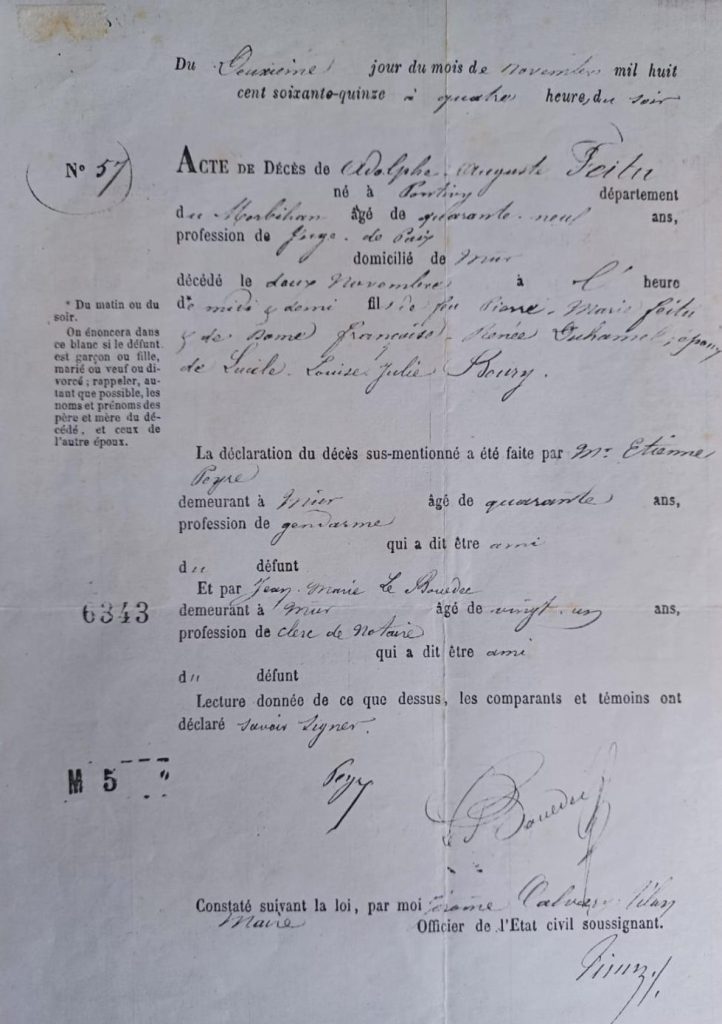
DEATH CERTIFICATE OF THE SCULPTOR’S FATHER
Tragically, Pierre’s father, a magistrate, died when Pierre was just under seven. His mother, headmistress of a public infant school associated with the “collège” of Dinan, exercised a natural authority and enforced strict discipline. She considered enrolling Pierre in a naval school, but he resisted her aspirations, expressing no desire for a theological seminary, civil engineering, or taxation.

COLLège – dinan – 1882
the mother of the artist at the age of 48
Instead, he boldly declared his ambition to become a painter! A Bohemian in the family? How scandalous!

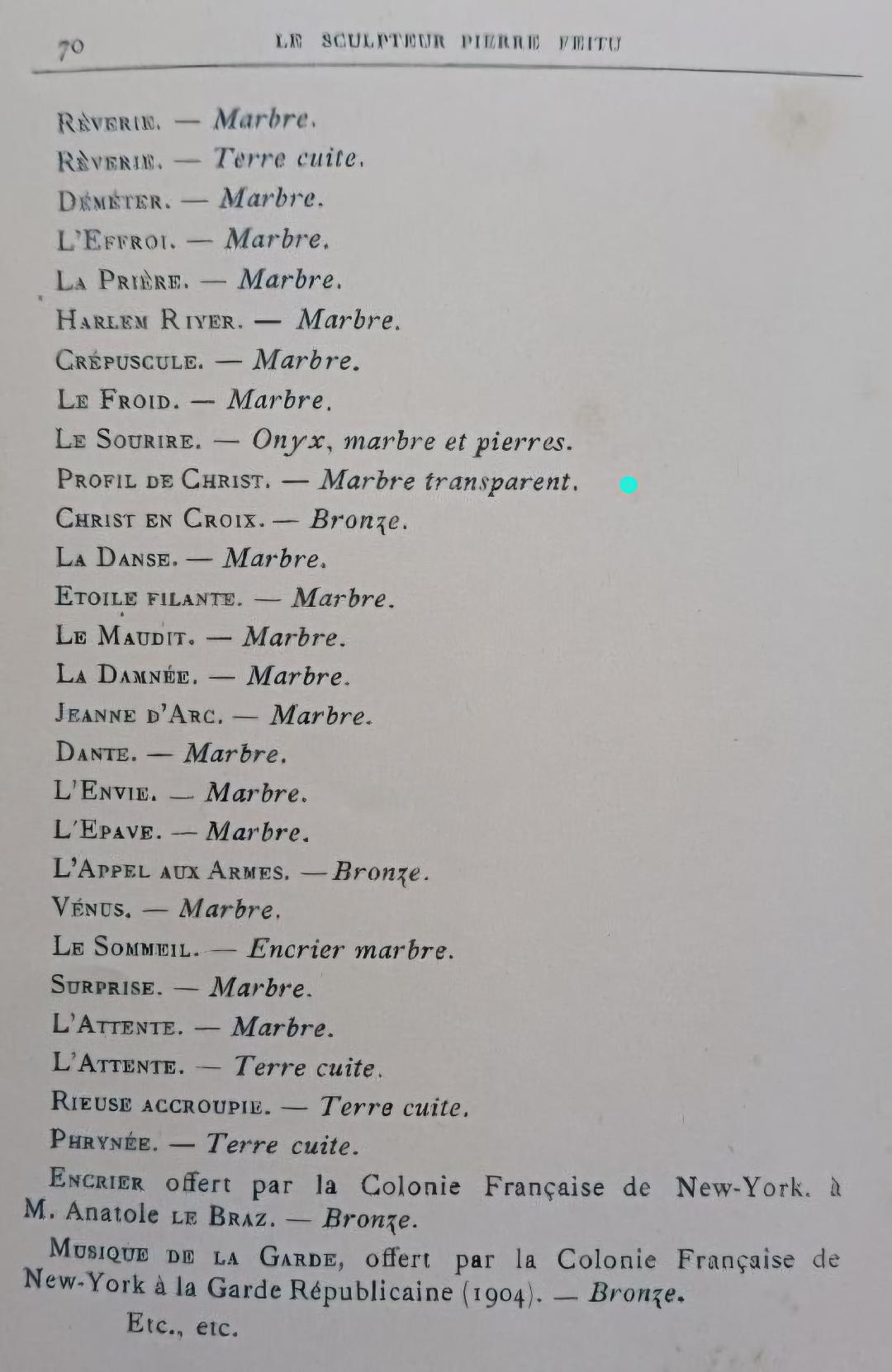

Christ’s face in profile – 1936 – Carrara marble

Under the mentorship of Mr. Charles Guernier’s father, a well-known art teacher in Brittany, Feitu’s passion for painting flourished. His talent was so evident that Guernier prophesied, “You will be an artist someday,” as noted in Émile Gilles’ article titled “Pierre Feitu, a Breton Artist.”
At just fourteen, he embarked on a journey as a trainee pilot aboard the Saint-Yves of Nantes, destined for India. Fate intervened when a cyclone sank the ship on its return voyage, but the crew, including young Pierre, was rescued after days adrift in a lifeboat, ultimately landing on the shores of Durban Port Royal.
While awaiting repatriation, he wandered into Zululand, daydreaming in places that were once graced by the Prince Imperial and where he had met his end.

THE WRECK – New York – 1903

Upon returning to Brittany, having served his time, he found himself facing the prospect of high school. However, his mother underestimated him: he was resolute in his intention to either paint or navigate – nothing else. He stood firm against his mother’s wishes and in defiance of her plans, he once again set sail as an apprentice sailor aboard the Thérèse et Nelly of Nantes, bound for the Caribbean Islands.
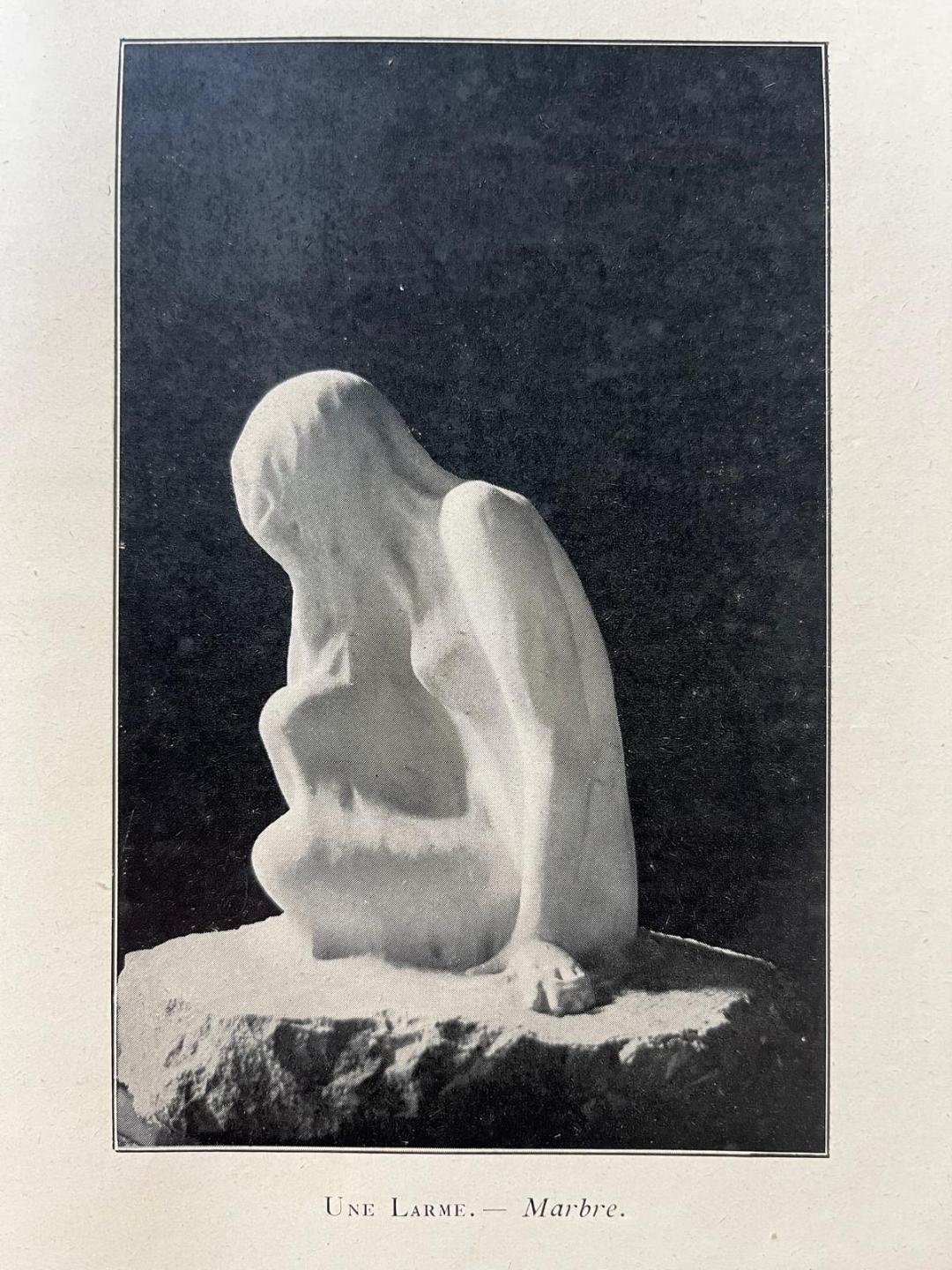
A Teardrop – marble
New York -1903

After returning to Brittany, he fulfilled his national service in Brest, where he subsequently created a portrait of Brière de l’Isle for the Naval Infantry Corps in his workshop on rue Amiral Linois.
While on military leave in Paris, staying with his uncle Rappeneau, he discovered a sculptor’s studio. The sight of the artist’s models kindled a fire within him; he realized his true vocation lay in sculpting, and from that moment on, he dedicated his spare time to modeling, learning and refining his skills independently.
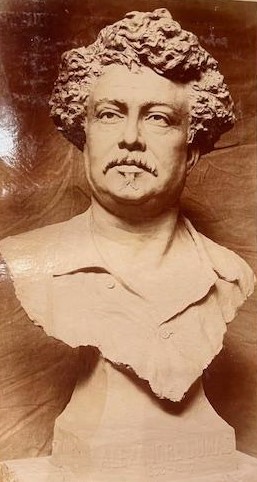
Alexandre Dumas
Astor Library
New York – 1908

Once he completed his military service, Pierre worked tirelessly in pursuit of his passion. His innate talent began to bear fruit, but as is often the case in the early years of an artistic career, he faced the harsh reality of financial instability, leading to significant changes.
Proclaiming himself a sculptor, he took a boat to Oran, where he found work as an assistant stationmaster in Pérégaux for the Franco-Algerian Railways. There, he crafted busts of the station manager and various Arab chiefs.
Eventually, he resigned but continued sculpting. He « also rode a magnificent Arabian horse every day that was gifted to him by a military governor and had fought a duel. »

Lust – New York – 1906

“Overwhelmed by excessive friendship and love,” he then journeyed to Almería, where he taught his craft at the Royal Spanish School. Unfortunately, illness compelled him to return to Paris. “From a distance, the great city is a beautiful mirage, but for a novice artist, it is a harsh reality.”
Pierre Feitu’s first workshop was modest and when it rained, he had to open an umbrella. His meals were sometimes meagre, but he owned a dinner jacket and had tickets to the Théâtre-Français, where he studied the postures of the performers.
Feitu immersed himself in various activities, even taking anatomy lessons. When he was with his cousin, Dr. Gesland, they discussed with expertise about the surgical procedures that had been performed by the latter.
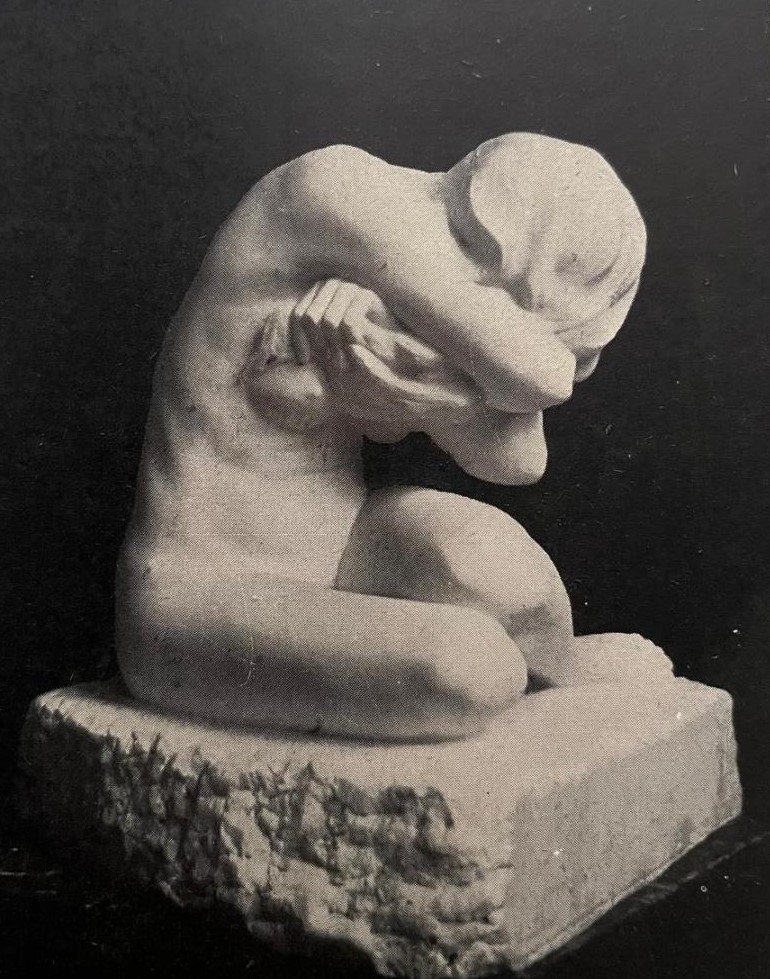
SHAMe – MarbLe
New York – 1903

In 1891, he exhibited his works for the first time at the Salon des Indépendants, managing to operate two workshops: one in the city center and another at the Chamber of Deputies.
«Later, I will recount the governmental incident that compelled him to leave France for New York in 1902, just as he was on the cusp of success. This impulsive and ill-timed departure condemned him to twelve years of labour, far from his homeland.»
During that period, he was the only French sculptor representing his art in the United States for a decade, achieving similar acclaim in Mexico.

Pierre Feitu in his workshop
Heintz Monument (Maquette) – New York – 1903

«He rarely reminded France of his existence, except once when the French Colony presented a statue to the Republican Guard in October 1904, while he was in New York. Although he never fully assimilated into American culture, he did marry, expressing that “the woman you love is the most intense possible bond.”»
Upon returning from Mexico in 1912, he resolved to create marble reproductions of his workshop models. Thus, he sailed to Italy, settling in Massa near Carrara in an old ducal estate.
Two years later, the task was completed. Pierre then returned to Paris, recalling it as the sole place capable of bringing recognition to a French artist.
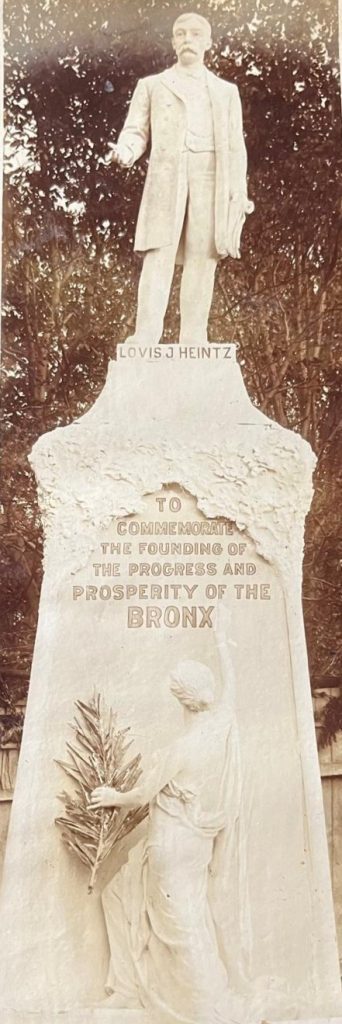
Bronx – Heintz – New York

Yet, despite being acknowledged by his peers, many remained unaware of his extensive body of work. Most of his grand marble statues — among the finest and largest he had created — remained in Massa. Feitu intended to ship them to Paris for an exhibition at Georges Petit’s gallery, alongside other recent works: fifty-six marble statues weighing twenty-two tons, a dozen bronzes, and two hundred portraits, busts, and medallions of well-known personalities. Unfortunately, it was then that the war broke out.

Bust of a gentleman
(Bust: man with a moustache and short curly hair)

His cold ground-floor workshop located at the dead-end of rue Ronsin in a suburb of Paris, illuminated by the frugal northern light, was filled with the tools of his trade — scaffoldings, ladders, step stools, buckets full of water, iron bars alongside mallets, chisels, files, rasps, and gouges. A block of cold clay lay half-wrapped in damp cloths to prevent evaporation and stave off the threat of rheumatism.
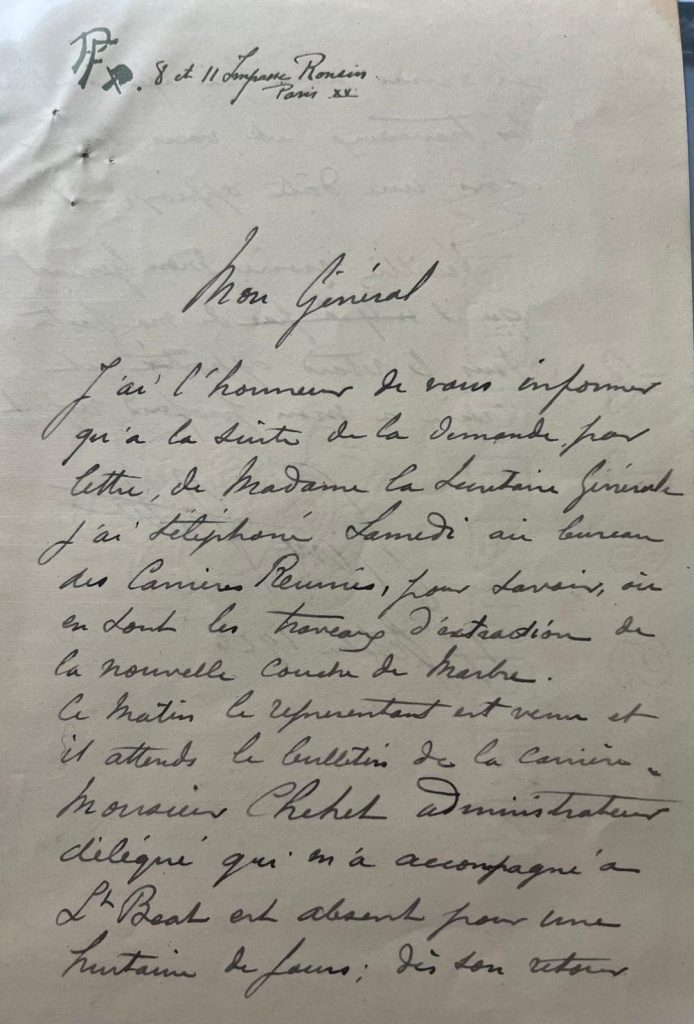
Letter sent from Pierre Feitu’s workshop in rue Ronsin TO GENERAL MARIAUX

In one corner, a white-hot cast-iron stove burned futilely year-round. The countless hours spent here went unnoticed, overshadowed by the constant financial struggles that beset Pierre looming large over his ambitions. Models, skilled assistants, and casters demanded exorbitant fees. Marble and bronze were precious materials; without substantial cash advances, no sculpture could be realised!” (excerpt from E. Chesneau’s preface in Louis Ténars’ book).

La Femme Penseuse (The Thinking Woman)
Bronze patiné – 1926

L. Ténars writes that he noticed five small statuettes of Pavlova in the workshop. He liked the man’s cordiality and gradually got used to his female companion, Berlioz’s great-niece, who was born in America to French parents and seemed to epitomise all the traits of the New World.
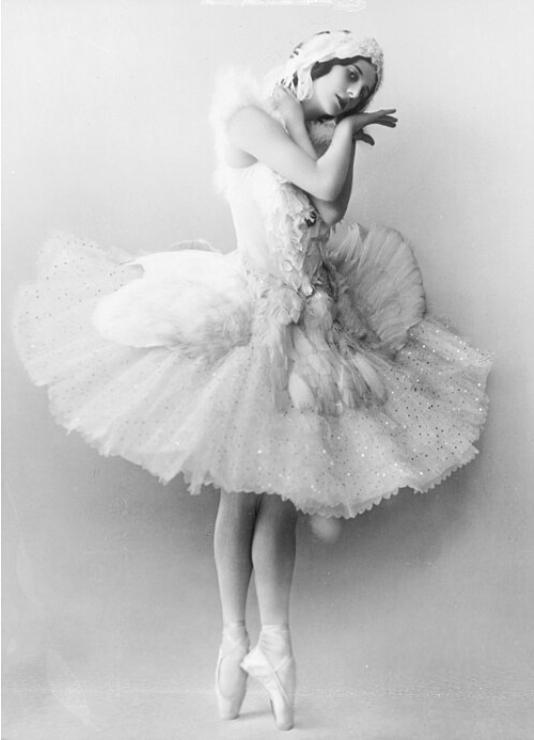
Anna Pavlova
(source of the photo : Wikipedia)
As I smoked cigarettes and sipped tea, I was getting to know the artist and his works, and I practiced pronouncing the name of Pavlova, whose legs, as they danced their steps, captivated me; she had consented to pose for Pierre Feitu in the United States.
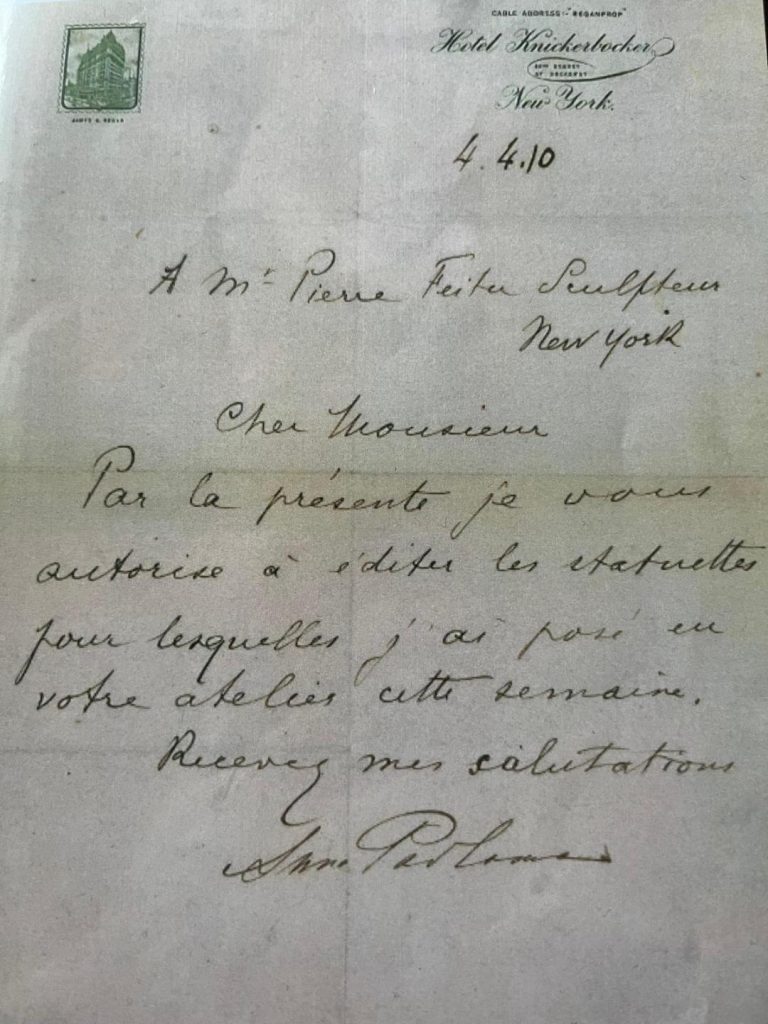

It was in this workshop that the monument for the Invalides was crafted.
“When I returned from Germany in August, I visited him; he was overwhelmed with joy. He had tried to enlist but had not succeeded. Feitu had ceased working, eagerly anticipating our victories.
At that time, the King of the Belgians was a hot topic of conversation; his achievements were remarkable. Feitu admired him greatly, as did we. One day, he revealed a model symbolizing Liège’s resistance. He envisioned crafting a sword to be presented to the king by the people of Paris, as a token of gratitude, for averting invasion.
He set aside a collection of busts for exhibition: Léon de Bercy, Emile Berr, General Cousin, Alexandre Duval De Fouquières, Jules Guedes, Annie de Pène, Van Driesten, Vinche, Willy, etc. These works were arranged on stone tablets among the marbles as the sword gradually took shape.

the sword of honour
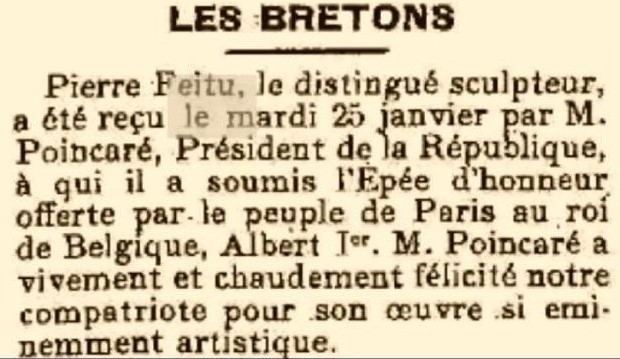
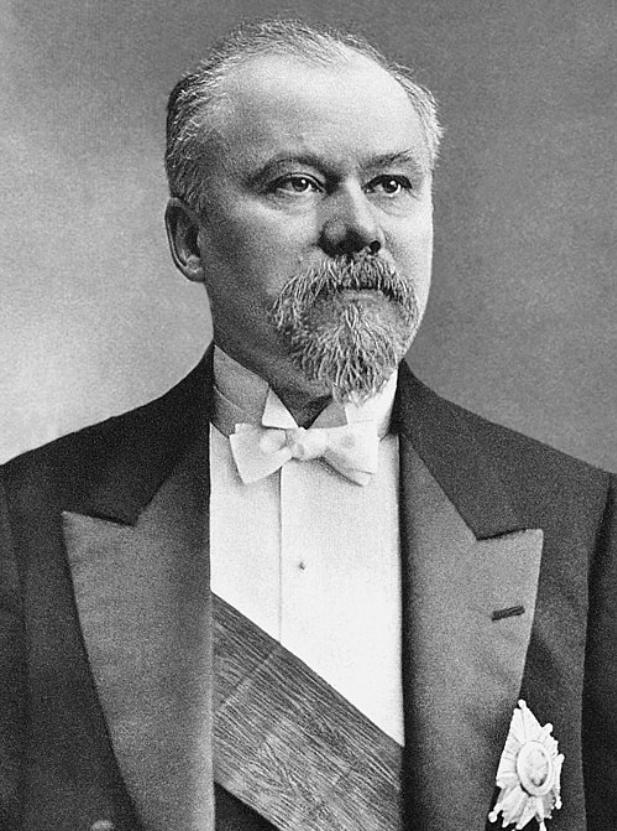
M. raymond poincaré, president of the French rEpublic

Upon seeing the finished sword displayed in its case, I recognised that Master Feitu had indeed crafted a royal gift. But that sword, which became a focal point of admiration by visitors from all allied nations, overshadowed the marbles. Out of friendship, I still paused before those works, but I was alone in doing so” (Louis Ténars, 1915).

A kiss from a friend

“One day, Feitu placed a large album and a hefty volume on my lap: it was heavy. The album was filled with photographs, while the volume contained newspaper clippings. I opened them many times” (L. Tenars).
As I read through the articles, I followed Feitu’s journey to fame, which was chronicled in detail. He was discussed in French, English, and German.
The album encompasses the entirety of the man’s efforts. The photographs of his work showcase the originality of the artist who, without a master, through his sheer expertise, managed to embody in marble the characteristics of the races he observed, the imprint of passions, the beauty and decay of the forms of both woman and man.
These were monuments, scale models, busts and statues – an extensive array of works showcasing his significant creative output.
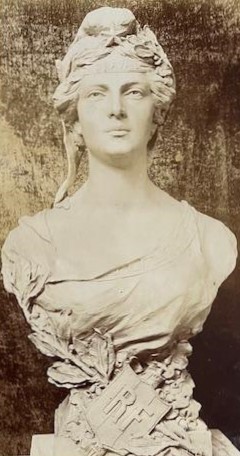
The French Republic – The French HospitaL New York – 1904

On rue Ronsin, I marvelled at Feitu’s ability to create a lifelike bust in just four sessions. As he moulded the clay, I was reminded of snapshots of the artist at work in his studios in New York, Mexico City, and Massa, fervently shaping his models and crafting group statues in just a few days. Feitu’s quest for self-expression led him to leave New York in 1910 for Mexico where he remained until the political landscape shifted with the fall of Porfirio Diaz, whose features he captured in a marble medallion of remarkable execution.
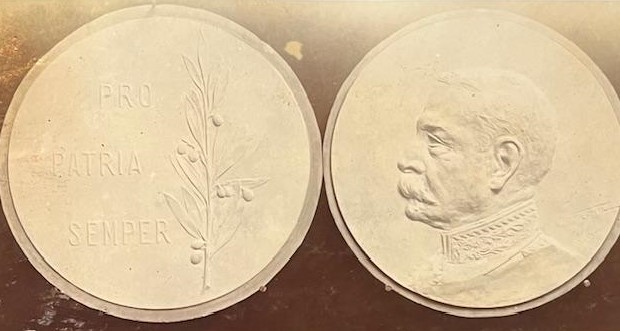
Medal featuring
General Porfirio Diaz
Mexico – 1910

Thus, his growing recognition led to prestigious commissions, including the creation of the “sword of honour awarded to the King of the Belgians by the people of Paris,” the sword of glory presented to Field Marshal Foch by Alsatians and Lorrains, and the monument at the Invalides honouring the generals who fell for France, alongside a monument commemorating Verdun’s defence and others erected in various regions (lines from Émile Gilles’ article titled “A Breton Artist, Pierre Feitu”) “except in his beloved Brittany.”
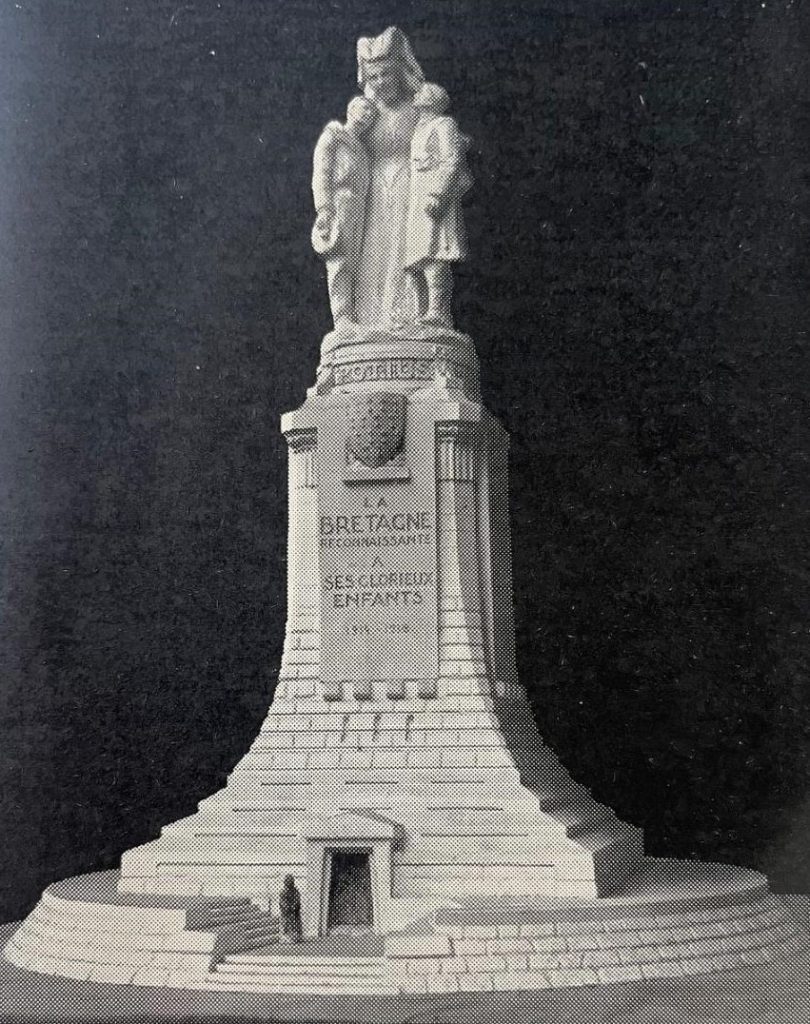
bRITTANY GRATEFUL TOWARDS HER GLORIOUS CHILDREN
(MAQUETTE)

Émile Gilles, in his reflections, expressed a desire “to see Feitu’s works exhibited in Breton museums, recognizing the artist’s independent spirit, tenacity, and love for beauty as a true expression of the Celtic soul.”
“As a gesture of reconciliation for her earlier rigidity regarding his artistic aspirations, Feitu’s mother attended each showing, proudly witnessing her son’s craftsmanship, especially when he was chiseling the sword for the Belgian king in Saint-Servan, another family port of call.”
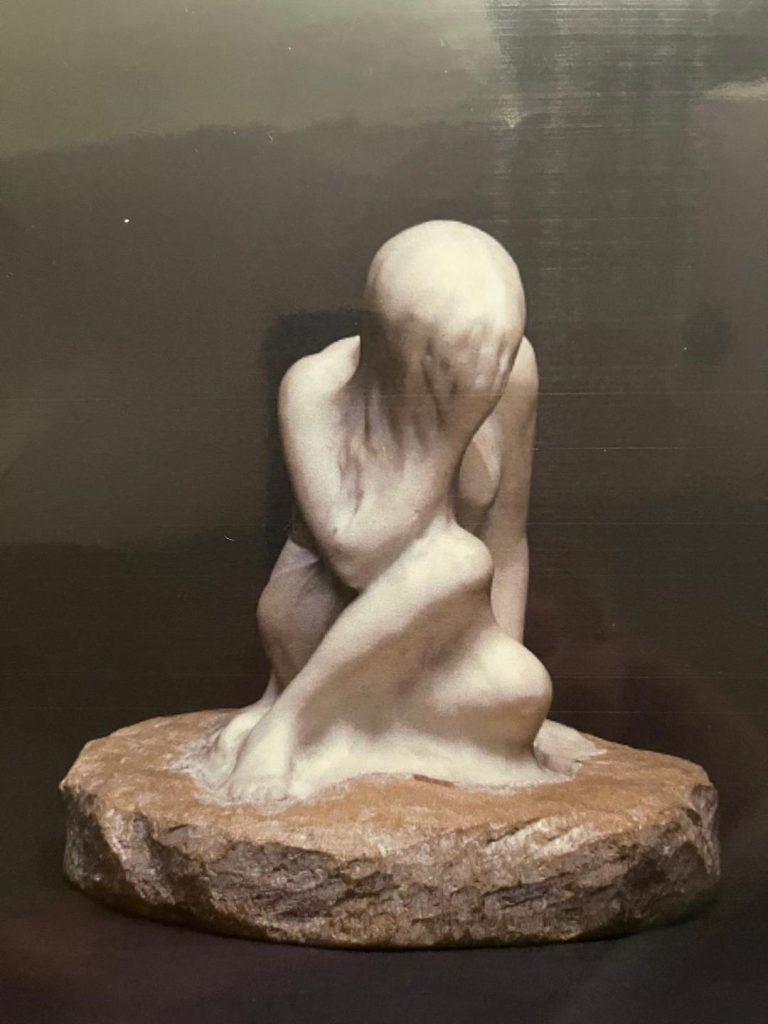

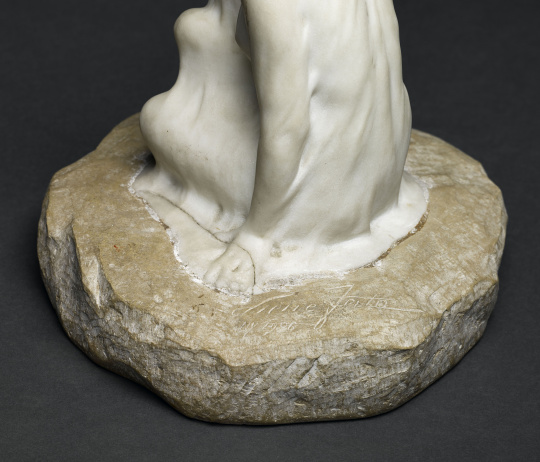
Pain – Marble – 1906
Photo copyright : © RMNGrand Palais (Château de Blérancourt) – Adrien Didierjean

Pierre Feitu passed away in 1936, leaving behind a legacy of artistry that, truly encapsulated the essence of his unique vision. He worked his way up through the ranks of recognition of his indisputable talent, firstly in France, then abroad and finally in France once again, when he was welcomed at the Élysée Palace by the President of the French Republic Raymond Poincaré for the presentation of the Sword of Honour bestowed on the King of Belgium S.M. Albert 1er by the people of Paris.


H.M. Albert 1er de Belgique
Photo copyright :
Musée des Beaux-Arts de La Rochelle ©

The duty of keeping his work and memory alive is now incumbent on us all.
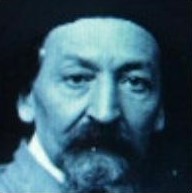

Pending documents


the two descriptive plates below have been kindly supplied to us by the municipality of Mûr-de-bretagne
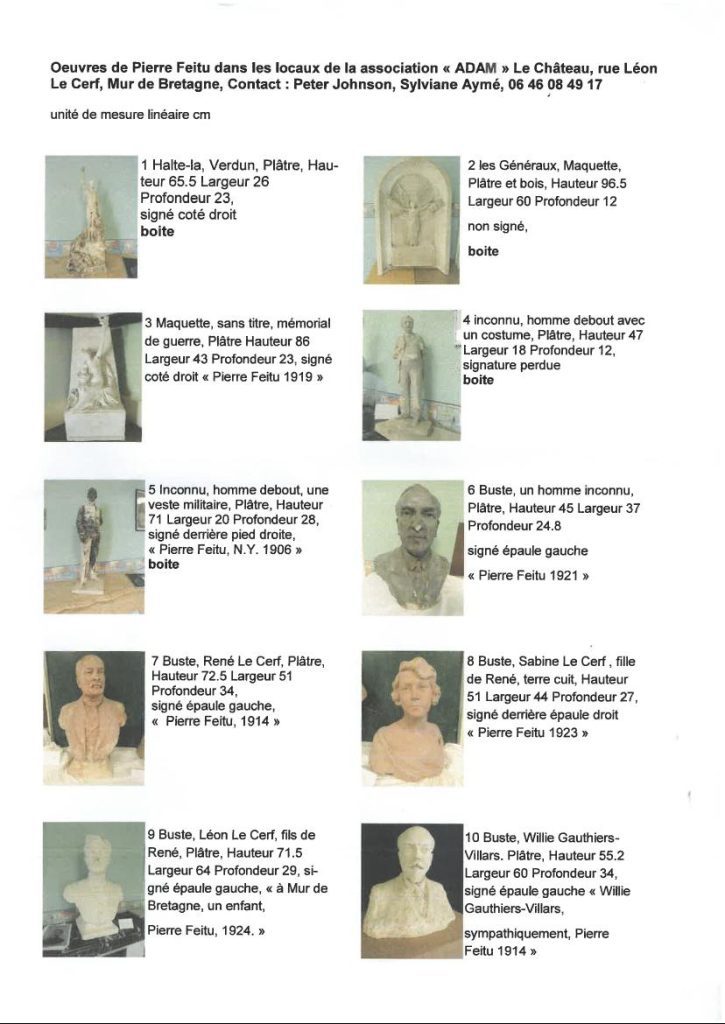


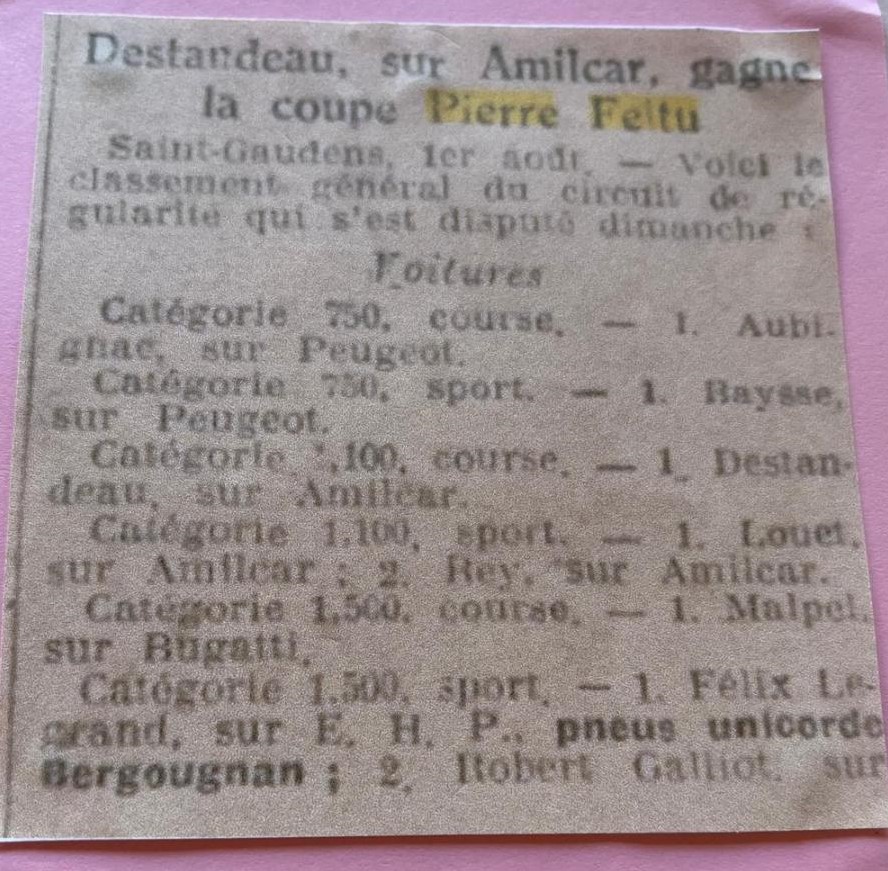
LA dépêche de toulouse -2 août 1927
Paper clipping announcing the ranking list of a motor race run the day before in Saint-Gaudens named Pierre Feitu Cup

